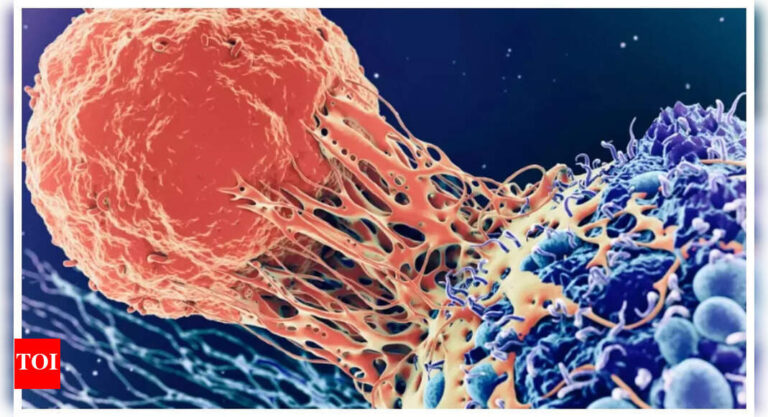Kidney disease is often called a “silent” condition because early stages rarely produce obvious symptoms. But as the disease progresses, your skin may begin to show warning signs that something is wrong inside your body. From persistent dryness and itching to unusual rashes and discolouration, these changes are more than just surface-level issues; they may reflect serious kidney dysfunction. If ignored, they can worsen over time or indicate advanced kidney damage. Understanding how kidney disease affects the skin can help you spot red flags early and seek medical attention before complications develop. These are 11 key symptoms to watch for.
11 skin changes you must not ignore, as they might signal kidney disease
Extremely dry skin
One of the most common skin complaints in people with kidney disease is excessively dry skin. This dryness may become severe, making the skin feel rough, scaly, and tight. Cracks may form easily, and in some cases, the skin can develop a fish-scale appearance. Such symptoms are especially prevalent in individuals with end-stage kidney disease who require dialysis or a kidney transplant. Moisturising regularly and avoiding harsh soaps can offer some relief.
Itchy skin (Pruritus)
Persistent and severe itching is a frequent and distressing symptom of advanced kidney disease. The itch can be localised to a specific area or spread across most of the body. For some people, the discomfort is constant and disruptive to daily life. In cases where topical treatments don’t provide relief, phototherapy using UVB light has been shown to help.
Scratch marks and skin damage
Chronic itching and scratching often lead to visible damage on the skin. This may appear as raw or bleeding areas, thickened patches (a condition known as lichen simplex chronicus), or the development of firm, itchy nodules (prurigo nodularis). These changes not only cause discomfort but can also become infected if not properly treated.
Skin colour changes
When the kidneys are unable to remove toxins effectively, waste products can accumulate in the blood, leading to discolouration of the skin. This can cause the skin to appear unusually pale, grey, or yellowish. Some people may also notice areas of hyperpigmentation or yellowish, thickened skin with deep lines and bumps, especially in areas that are frequently scratched.
Nail abnormalities
Kidney disease can cause noticeable changes in the fingernails and toenails. Common signs include “half-and-half” nails, white at the top and reddish-brown near the base; pale nail beds; or horizontal white bands (known as Muehrcke’s lines). Because nails often reflect underlying health issues, these changes should not be ignored and warrant medical evaluation.
Swelling in the skin
When the kidneys fail to remove excess fluids and salt, it leads to swelling (oedema) in various parts of the body. This swelling may be most noticeable in the legs, ankles, feet, hands, and face. It can cause the skin to appear stretched and shiny and may make wearing shoes or rings uncomfortable.
Rashes
The accumulation of toxins in the blood can also lead to skin rashes. One type of rash seen in people with end-stage kidney disease presents as small, dome-shaped bumps that are intensely itchy. These can merge into larger, rough patches and often recur even after healing, contributing to ongoing discomfort.
Blisters
Some individuals with advanced kidney disease may develop spontaneous blisters on areas such as the hands, feet, or face. These blisters tend to open, dry out, and crust over, often leaving behind scars. While not common, their presence may signal severe systemic issues requiring prompt attention.
Unexplained lumps in the abdomen
A mass or lump in the belly, side, or lower back may indicate kidney cancer, particularly in advanced cases. While not all lumps signal something serious, any new or persistent swelling should be evaluated by a doctor to rule out malignancy or other underlying conditions.
Tight or hardened skin (Nephrogenic Systemic Fibrosis)
In rare cases, patients with kidney disease who undergo MRI or CT scans using gadolinium-based contrast agents may develop a condition called nephrogenic systemic fibrosis. This results in areas of shiny, hardened skin that are too tight to pinch and can restrict movement in joints like the knees or elbows. Patients with kidney issues should inform their doctors before undergoing contrast-based imaging.
Calcium deposits in the skin
Kidney disease can disrupt the balance of minerals such as calcium and phosphate in the blood. When calcium levels rise excessively, it may lead to deposits under the skin, often around the joints. These calcium deposits are typically painless unless they form near fingertips, where they can become quite painful and may even break through the skin, releasing a chalky substance.Chronic kidney disease (CKD) affects millions of people, many of whom remain undiagnosed until the condition is advanced. Routine screening through blood and urine tests is essential, particularly for individuals at higher risk, such as those with diabetes, high blood pressure, or aged over 65. While nephrologists oversee the management of kidney function, the role of dermatologists becomes crucial when skin-related symptoms emerge. Severe dryness, itching, and other visible skin changes can significantly impact daily life. Early dermatological intervention with targeted treatments can not only ease discomfort but also help detect underlying kidney issues before serious complications arise.Also Read: Study finds frequent standing may improve heart health after menopause: Benefits seen in postmenopausal women







